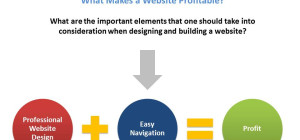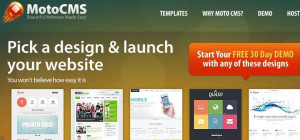Thanks to the advance in the digital sphere, we can achieve various tasks that prior was almost impossible without professional aid from a design agency or freelancer. Now, we are able to create online platforms and design them with the help of numerous software. The range of website builders is vast, and even a non-professional can manage them. Besides, there are plenty of ready-to-use templates and themes that significantly facilitate the process. However, web design is not as easy as it might seem. It takes a dedicated approach and much attention to detail. If you want to create an excellent website for your company or personal needs, it’s crucial to know some web design pillars. In other words, it’s better to pave the way for success in advance rather than to meander through possible decisions during the process.
Web design elements
When you think of a design, what comes to your mind? Many still consider design to be mostly visual. But in truth, it encompasses many more aspects, including function as well. Let’s consider the main elements of a web design first.
● Layout
The layout is the general look of a website that may both appeal to or alienate the viewers. When users launch the website, they see it as a whole. Thus, the layout is the first impression of your website, and you want it to be favorable.
● Color
Another core element of a website design is color. It ties all the other elements creating a holistic experience. Colors have various emotional connotations. Thus, they are able to produce different associations, enhancing the overall impact.
● Typography
Websites usually include some textual information, and the fonts you choose are critical for its readability, comprehension, and perception. Eccentric types suit best some loud and emotional messaging, while simple ones complement better business-like issues. Also, typography is able to create levels of information according to its importance. For instance, you would use big font sizes for titles and headings and smaller ones for the body copy. It ensures that even heavy-text information is easy to read and grasp.
● Spacing
If your website is stuffed with information, it’s hardly possible for the users to extract a mere sentence. That way, they are more likely to abandon it. Here comes spacing. It helps you to avoid a cluttered picture and allows for a better disposition of on-site elements. Leaving some areas blank, you can achieve a design equilibrium that is pleasant to the users’ eye. Also, white space can help you to direct your visitors and urge them to perform some actions. For instance, you can focus the user’s attention on your CTA by leaving the space around it blank.
● Content
If your website is excellent but doesn’t provide any meaningful content, what is the sense? The content is the primary reason users arrive at the website. It’s up to you which content you want to disclose. But it’s crucial to make sure that it is engaging, informative, and worth hearing.
● Visuals
We are hardwired for visuals. Therefore, if your design doesn’t include any images, there are almost no chances to appeal to the users. Imagery transmits messages without textual representation, sets the tone and mood of a website, and merely attracts visitors. Photos impress and stir the imagination. Videos and animations are able to captivate viewers and influence them.
● Navigation
Navigation is vital for every website. It allows users to easily manage the content without getting lost in the flow of pages. Straightforward and transparent navigation helps visitors to find necessary points quickly and easily. As a result, it improves the user’s experience and increases usability.
● CTAs
Every web platform aims to appeal to the user and urge them to perform some actions – be it a subscription, acquisition, or a mere like and share. For that reason, every web design involves the use of CTAs. Your call to action button needs to be instantly noticeable. You can use contrasting colors, white space, or animation to highlight them and attract the user’s attention.
● Compatibility
Creating a website that functions well on a desktop only and in one specific browser is senseless. Since technology evolves and produces various ways of accessing the web, including smartphones and tablets, you must keep up with the pace if you want to be successful. That’s why it’s crucial to make sure your design is compatible with other browsers and gadgets.
Web design principles and how to design a website
Once you know the elements of web design, you can start crafting your own website. However, it’s not enough for absolute success. To make your platform more proficient, you need to learn some of the web design principles and adhere to them in practice.
● Maintain consistency in everything
All the design elements should merge into a coherent amalgam, not into a conflicting set. Consistency helps you to create a holistic experience for the users. Here, it’s crucial to design with a vision in mind. Choose only those elements that suit your idea well.
● Use visual hierarchy
Usually, web design combines various visual elements, and it’s critical to maintain the hierarchy between them. It creates a well-structured picture that is easy to percept.
● Be transparent
Users want to get the point effortlessly, and that’s why web design means transparency of form and meaning. Elaborated and complex layouts may confuse users and alienate them. The same goes for the content. Don’t provide bewildering and complex information unless you’re sure your target audience knows it. It doesn’t mean you should avoid any implicit meanings. You can create an enigma to interest your audience and encourage them to disclose the secrets. But don’t overact, do it in moderation.
Now, when you know web design pillars, you can move to the process itself.
1. Set the goals
First, you need to think about web design objectives. Your goals are the blood-life of the process, and you should keep up with them during the whole procedure to avoid inconsistency. Whether you want to craft a personal blog or an e-commerce website, the design will differ. And knowing your aims helps you set the direction and easily find the way to your destination.
2. Choose the software
Now, you need to choose the vehicle of achieving your goals, in other words, a web design tool. Here, rely mostly on how it manages to meet your needs in the design and working process. Some software provides a possibility to work collaboratively in real-time – some doesn’t. And you should keep these features in mind when deciding, as success partially depends on the tool you use.
3. Pick up color schemes and fonts.
When choosing the colors and fonts, make sure they go hand-in-hand with your branding policy. They should transmit the tone and mood of your brand. Thus, it guarantees consistency.
4. Create the layout
Here, you need to create an initial layout of the website and pick up layouts for the main web pages. Make sure you arrange design elements well and use only comprehensive and transparent formats.
5. Define your content
At this stage, you need to define what information to put on your website. It will help you to choose the best design decisions for the specific type of content. For instance, personal blogs need to be easy-to-navigate. But e-commerce or travel websites need even more prolific navigation with a noticeable navigation bar.
6. Go visual
Don’t forget to add images, photos, or videos, as they complement your website design. What is more, videos on the homepage may say a thousand words and save you from putting much textual data on the page. Images are perfect for diluting textual content throughout the site. Also, you can use animation to make your website design more engaging and interactive.
7. Be mobile-friendly
Nail down that your website runs well on various platforms, including mobiles. Optimize all on-site design elements for better compatibility and faster load speeds. That way, you will provide all of your users with an excellent experience.
To summarize the whole article, website design is a highly complicated process that takes a full understanding of its elements and principles. But once done thoroughly, it can bring you impressive results.








